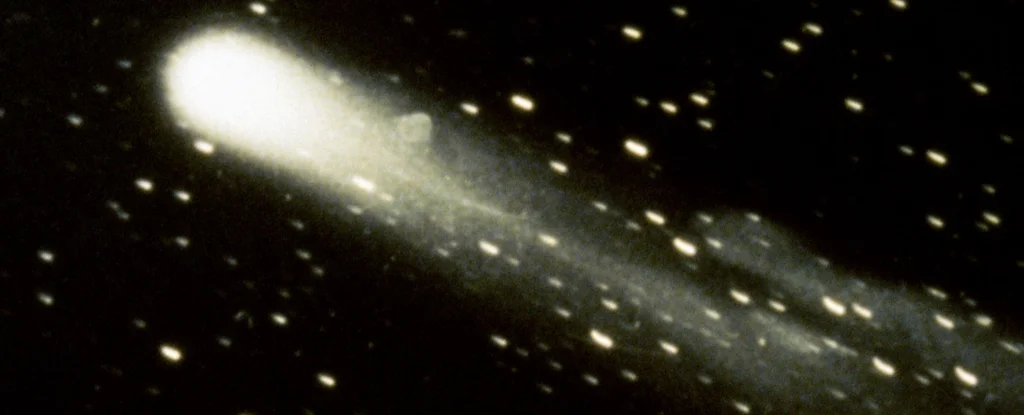Halley’s Comet begins its journey back to Earth
- December 9, 2023
- 0
Halley’s Comet is about to head our way, opening in 2061 after being away from Earth for nearly 40 years. On Saturday, December 9, the famous comet is
Halley’s Comet is about to head our way, opening in 2061 after being away from Earth for nearly 40 years. On Saturday, December 9, the famous comet is

Halley’s Comet is about to head our way, opening in 2061 after being away from Earth for nearly 40 years. On Saturday, December 9, the famous comet is predicted to reach its farthest point from the Sun, also known as aphelion, at a distance of about 35 astronomical units (AU), or about 35 times the distance between the Earth and the Sun. According to NASA. This puts the comet well outside Neptune’s orbit and almost in Pluto’s front yard, with an orbit of about 39 AU.
This is sort of the middle of Halley’s routine, the 76-year orbit of the Sun. For the last 38 years or so, the comet has been moving millions of kilometers away from us every day; will now spend the next 38 years getting closer.
According to NASA, Halley’s last close approach to the Sun (or perihelion) was on February 9, 1986, when it came within 54.6 million miles (87.8 million kilometers) of the Sun; It is about 0.58 AU from our star, or just inside the orbit of Venus. Astronomers have not seen the comet since 2003; After this date, the comet became too small and faint to be seen.
comets They are balls of ice and dust that revolve around the Sun. These celestial bodies are known for their “tails,” which form when solar radiation evaporates ice particles in the comet’s body, causing a stream of gas and dust to follow.
Halley’s Comet was the first comet predicted to return to Earth’s sky. Astronomer Edmond Halley observed the comet in 1682 without knowing exactly what it was; He first called it a “hairy star,” according to a sky-observing news website. EarthSky.
Halley compared his observations with similar observations reported in 1531 and 1607 and suggested that all three observations were repeated appearances of the same object. Halley predicted that the object would reappear in 1758, and it did. Halley, who died in 1742, was never able to confirm his predictions, but future scientists eventually named the comet after him.
Halley’s Comet will next approach the Sun on July 28, 2061. Until then, you can see the glowing legacy of the “hairy star” twice a year during two meteor showers associated with the icy debris left behind by the comet during its earlier journeys. Earth’s orbit. The Delta Aquarid meteor shower in May and the Orionid meteor shower in October occur when ancient debris from Halley’s Comet falls into Earth’s atmosphere and burns up as “shooting stars.”
Source: Port Altele
As an experienced journalist and author, Mary has been reporting on the latest news and trends for over 5 years. With a passion for uncovering the stories behind the headlines, Mary has earned a reputation as a trusted voice in the world of journalism. Her writing style is insightful, engaging and thought-provoking, as she takes a deep dive into the most pressing issues of our time.